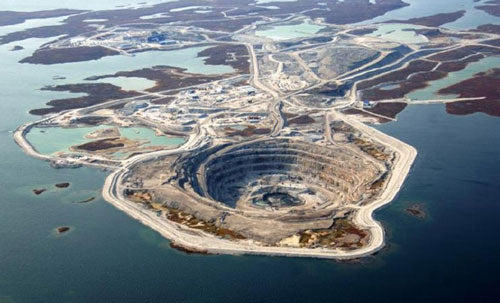Where Do Precious Gemstones Come From?
We source many precious and semi-precious stones for our jewellery pieces and they come from all over the world. Gemstones are defined by the World Jewellery Confederation as “natural inorganic material” and, with the exception of pearls, they come from very specific locations.

Gemstones from Africa
Kenya, Tanzania and Mozambique sit on a wealth of gemstones including rubies, sapphires, tanzanite, alexandrite, aquamarine, rhodolite, Tsavorite garnet and tourmaline. Often gemstones reflect their source, for example Tanzanite comes from Tanzania and Tsavorite comes from Kenya’s Tsavo National Park.
Madagascar is the large island off the southeast coast of Africa. It is a leading supplier of sapphires along with aquamarine, quartz, morganite, tourmaline, tsavorite, demantoid garnet and labradorite.

Gemstones from Asia
Myanmar (Burma) produces 90% of the world’s rubies as well as spinel, peridot, garnet, iolite and imperial jade (which is mainly exported to china).
India’s mines produce mainly moonstone, iolite, aquamarine and garnet
Sri Lanka, nicknamed the “Treasure box of the Indian Ocean” is awash with garnet, zircon, tourmaline, beryl, topaz and quartz, particularly around Ratanpura. Many gemstones are found in old riverbeds where they have been washed down and then covered by river deposits; they are only now being discovered.

Gemstones from the Americas
Brazil is home to a spectrum of colourful gemstones including tourmaline, amethyst, topaz, beryl, morganite, aquamarine and quartz. Unfortunately, the mines of Paraiba tourmaline are almost depleted, hence its high value today.
Chile is a top producer of beautiful blue lapis lazuli.
Gemstones from Australia
Australia is the main source of opals which come in an array of colours from white and blue to black, the most fiery and colourful of all.
Gemstones from Europe
Russia has vast mineral reserves including dermatoid garnet and alexandrite.
What’s the difference between precious and semi-precious gemstones?
Traditionally there are four gemstones that are considered “precious” and these are diamonds, rubies, sapphires and emeralds. Historically, they were deemed precious as they were the rarest, with extraordinary clarity and colour, and were therefore the most expensive.
Semi-precious gemstones must be hard and durable as well as having the characteristics of brilliance, clarity and colour. These include stones from the quartz family such as amethyst, citrine, ametrine, rose quartz, topaz and garnets along with turquoise, tanzanite, spinel, alexandrite, peridot and tourmaline. Other precious stones include pearls, moonstones and opals.
The distinction between precious and semi-precious gemstones was only devised in the 19th century, but times have changed and perhaps those classifications are in need of an update! For example, tons of amethyst deposits were discovered in Brazil and Uruguay in the early 19th century and suddenly this “rare” gemstone was not so rare and valuable after all! Similarly, tons of South African diamonds discovered in 1870 threatened to flood the market and devalue their value, until DeBeers stepped in. This powerful cartel now controls the quality and quantity of diamond production to ensure it remains the most precious gemstone of all.

When it comes to price, the finest quality semi-precious stones can command as high a price as traditional precious stones, especially if they are rare, such as Paraiba tourmaline, rhodolite and peridot.
How to choose a precious gemstone
As this quick round-up shows, precious and semi-precious gemstones come from every corner of the globe. They are mined, cut and polished to meet the market demand for precious gems used in significant pieces of jewellery that become treasured family heirlooms.
The best way to choose a gemstone is to choose something that appeals to you or your loved one in colour, brightness or symbolic significance, such as a birthstone. That way it will always retain its emotional value and will be loved and treasured forever.

